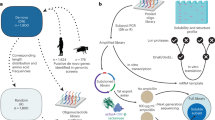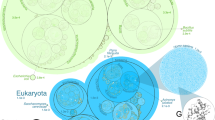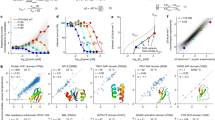Abstract
The availability of many genome sequences gives us abundant information, which is, however, very difficult to decode. As a consequence, in order to advance our understanding of biological processes at the whole-cell scale, it becomes very important to develop higher-level, synthetic descriptions of the contents of a genome. At the protein level, an effective scale of description is provided by protein domains. Domains are independent unit-shapes (or "folds") forming proteins. They are structurally stable and have thermodynamic origin. A domain determines a set of potential functions and interactions for the protein that carries it, for example DNA- or protein-binding capability or catalytic sites. Protein domains are found on genomes with notable statistical distributions, which bear a high degree of similarity. A stochastic growth model with two universal parameters, related to a minimal number of domains and to the relative time-scale of innovation to duplication reproduces two important features of these distributions: (i) the populations of domain classes (the sets, related to homology classes, containing realizations of the same domain in different proteins) follow common power-laws whose diversity is related to genome size measured by the total number of proteins or protein domains and (ii) the number of domain families is sublinear in genome size. In this evolutionary process, selective pressure can enter both as a global constraint on the innovation time-scale, and as a regulator of the population of specific domain classes, related to their modularity: some shapes are common to all genomes, some are contextual. These two features are sufficient to obtain general quantitative agreement with data from hundreds of genomes, and show that robust self-organizing phenomena encase specific selective pressures during evolution.
Similar content being viewed by others
Article PDF
Author information
Authors and Affiliations
Corresponding author
Rights and permissions
About this article
Cite this article
Cosentino Lagomarsino, M., Sellerio, A., Heijning, P. et al. Evolution of the Protein Universe. Time Scales and Selection. Nat Prec (2007). https://doi.org/10.1038/npre.2007.1376.1
Received:
Accepted:
Published:
DOI: https://doi.org/10.1038/npre.2007.1376.1



